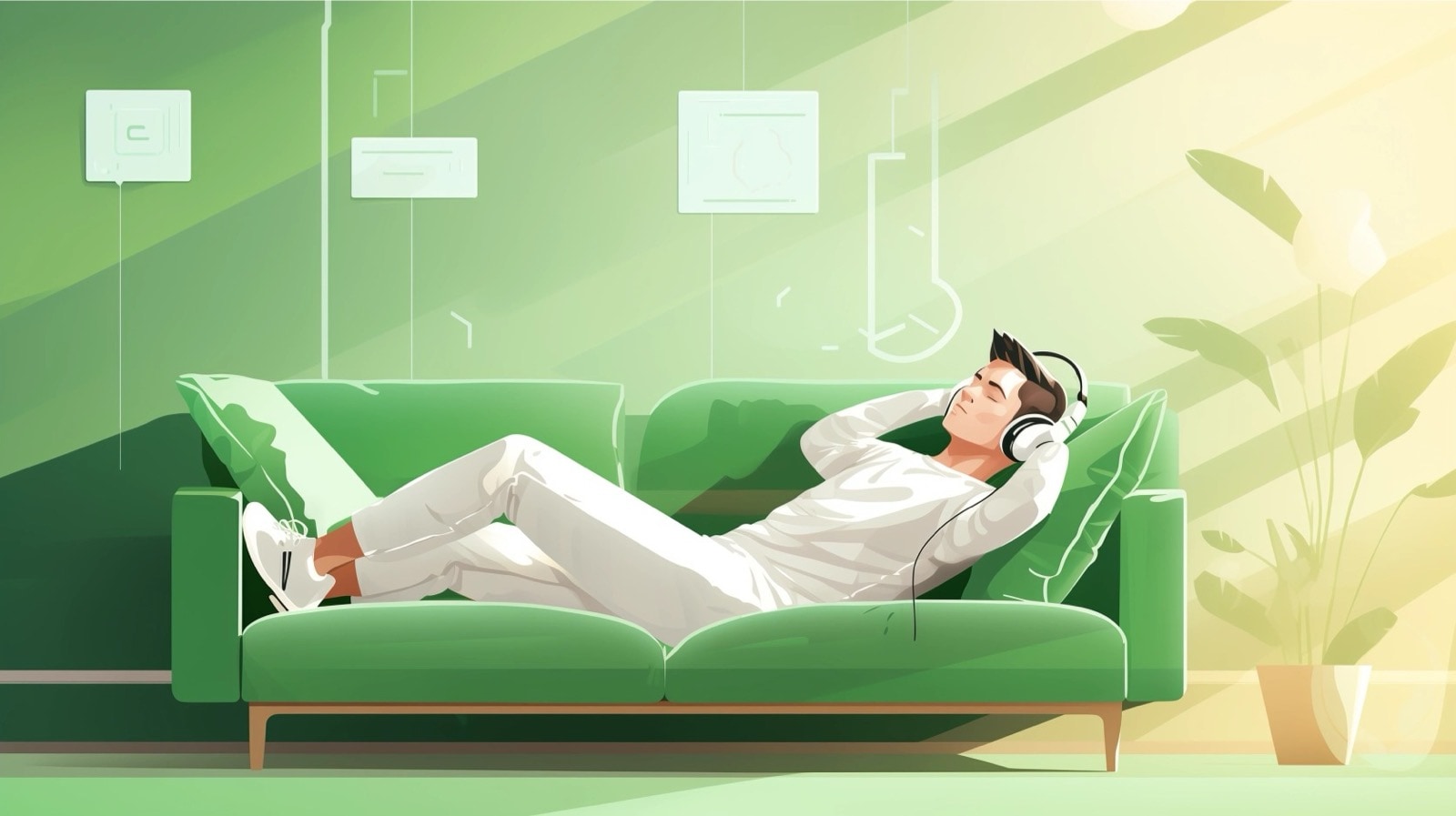For many users, the Kindle is a symbol of the reading device of the future. However, it’s not the first one, and not even the most exciting one.
The first-generation Kindle was released on November 19, 2007, starting the digital revolution of the 21st century.
The history of improving books to make them more accessible and convenient is much longer than that.
Book machines listed below have inspired, and still inspire, not only to improve books but also to read them.
You will find on the list a book wheel that was created in the 16th century, a series of amazing machines invented in the first half of the 20th century (including devices by Bradley Allen Fiske and Bob Brown), and direct predecessors of the 1st-generation Kindle: Rocket eBook and Sony LIBRIé e-readers.
As you will see, they are much more exciting than a more accurate touch response, adjustable warm light, or 25% faster screen refresh rate in new models of e-readers.
These machines, unfinished constructions, or concepts existing only on paper, answer our constantly evolving reading needs.
12 vintage book machines before the Kindle
1. Book Wheel, 1588

This stunningly creative construction was invented by an Italian engineer Agostino Ramelli in the late 16th century.
The machine answered a simple need to have access to several books at the same time – something every e-reader, tablet or a smartphone offers nowadays by default.
Ramelli’s invention is a simple idea: the wheel rotates books in front of a reader to bring a relevant title by just turning around.
The most creative part of the machine was the system ensuring the shelves with books would stay at the same angle. The system was based on epicyclic gearing, something that had been used only in astronomical clocks at that time.
The Book Wheel was described in Ramelli’s book The Various and Ingenious Machines of Captain Agostino Ramelli, which was published in 1588.
Ramelli never built his machine, but its design inspired generations of book lovers. In 1986, famous architect Daniel Libeskind presented his version of the Book Wheel.
How many books do you read at the same time? 16th century invention of Agostino Ramelli would have let you keep 12 books opened.
2. British reading chair, ca. 1750

From the online collection of The Metropolitan Museum of Art: the reading chair made from walnut, oak, beech wood, with candle cantilevers and armrests on either side.
There is not much information about this smart piece of furniture, so we can only imagine how it was used.
To read you had to face the seatback which was actually the stand for the book. But you could turn around and use it as a normal chair.
3. Revolving five-book reading stand, ca. 1810

Made of solid walnut, this cube-shaped stand allowed the reader to hold five opened books and make them quickly accessible thanks to the rotating base. It made a great tool for cross-checking information from several sources.
The stand was handmade at the Monticello joinery around 1810, and was most probably based on Thomas Jefferson’s concept and specifications.
The stand had five foldable book holders – one on the top and one on each of the four sides. All holders could be folded down to form a cube that one could carry to another place. Thanks to a hole in the bottom, the stand could be used on a tripod base.
You can find a line-by-line reproduction of the original Jefferson’s stand in the Monticello online store.
4. Holloway Reading Stand, ca. 1890

In the search for convenience in reading, The Holloway Co., a factory from Cuyahoga Falls, Ohio, designed and patented in the late 19th century a piece of a furniture which combined a dictionary holder, book rest, lamp stand, and writing table.
In the promotional catalog, which by the way is available in the Internet Archive thanks to the Winterthur Museum Library, we read:
💬 Book readers know the tiresomeness of holding books in the best position for comfortable reading […] The Reading Stand holds the open dictionary by your side, only a turn of the head being required to consult it, while the book you are reading is held open before you.
The company has tested and improved the machine for several years. The catalog says that the Holloway Reading Stand is “in daily use in nearly every country on the globe.”
The stand came together with another furniture for book lovers, the Century Dictionary Case, designed to hold six volumes of The New Century Dictionary.
If you are curious about the price, the Holloway Reading Stand was available for $14, a version with chess-board top for $15.
5. Fiske’s Portable Reading Machine, 1920s

The reading machine developed by a naval officer and tech inventor Bradley Allen Fiske was the first truly portable device designed for reading books.
This stunningly creative device was designed to read printed texts miniaturized using photo engraving techniques to fit 6×2 inch cards. To demonstrate the power of the device, Fiske miniaturized the first volume of Mark Twain’s Innocent Abroad into 13 such cards.
💬 A user would insert the card into the machine and read it through the magnifying lens, moving both the card and the eyepiece to switch between several columns of print.
The reading machine featured a magnifying lens to enlarge the text. There was also an adjustable metal cover to shield the other eye.
The final prototype was revealed in 1922 in Scientific American. Before, Fiske was experimenting with different ideas, with one of them using paper spools instead of cards.
6. Reading machine by Bob Brown, 1931

In 1930, an American avant-garde writer Bob Brown published a manifesto, entitled “The Readies,” where he called for a new reading machine that would allow him to continue reading quicker and more conveniently.
💬 A simple reading machine which I can carry or move around and attach to any old electric light plug and read a hundred thousand word novels in ten minutes if I want to, and I want to. A machine as handy as a portable phonograph, typewriter or radio, compact, minute operated by electricity, the printing done microscopically by the new photographic process on a transparent tough tissue roll…
The machine answering Brown’s manifesto was constructed a few months later by Ross Saunders and Hilaire Hiler. It was revealed in May 1931 at the meeting of surrealist artists in Cagnes-sur-Mer, on the French Riviera.
The artists believed “the machine would be a part of a revolutionary transition to a liberated wor(l)d” (a quote from The Amazing Adventures of Bob Brown by Craig Saper).
The device was constructed from a breadbox, and included a system of wires and spools to present special texts written and processed for it, called “readies.”
7. Microfilm Book Reader, 1935

Everyday Science and Mechanics from April 1935, brought an interesting idea of the book of the future, as seen at that time. The prediction was that books and newspapers would be stored and read on microfilm.
The stand was therefore designed to hold a screen which displayed photographs of book pages. The description of the machine said (via Smithsonian):
💬 It has proved possible to photograph books, and throw them on a screen for examination, as illustrated long ago in this magazine. At the left is a device for applying this for home use and instruction; it is practically automatic.
The display was mounted on a large adjustable pole. The stand included also a book lamp, and a special control panel to turn pages and adjust focus.
In the 1930s many people believed microfilm would be the future of publishing. The same year the New York Times started copying all of its editions onto microfilm.
8. Enciclopedia Mecánica, 1949

In the search for a first electric book reader, we’ll have to go back not to 2007, but to 1949, to Ferrol, Spain.
Ángela Ruiz Robles, a teacher and writer, received a Patent No. 190,698 for “a mechanical, electrical and air pressure reading book” – Enciclopedia Mecánica (Mechanical Encyclopedia).
The device was equipped with coils where the books were being placed. The movement of coils passed over the topics.
💬 In the left has a series of automatic spellers in all languages with a very slight pressure on a button displaying the letters you want, making words, phrases, lesson or topic and all kinds of writings. In the upper right spellers carried a coil with any kind of line drawing, and the left one with ornamental and figure drawing. In the bottom of the spellers, plastic to write, operate or draw. On the inside, a case for subjects.
Mechanical Encyclopedia had a zoom function, thanks to which the reader could focus on a specific text.
The prototype is exhibited in the National Museum of Science and Technology in La Coruña.
9. Xerox Sigma V Mainframe Computer, 1971

Xerox Sigma V was not designed specifically for the electronic book, but it’s the single most important machine that let us enter the world of digital reading.
On this computer, on July 4, 1971, Michael Stern Hart, the founder of Project Gutenberg, created a first ebook ever. It was, well, it is, an electronic version of the Declaration of Independence.
The story of creating the first ebook is fascinating. In 1971, Michael Hart, passionate technologist and futurist, was given access to extensive computer time on the Xerox Sigma V mainframe at the University of Illinois. He didn’t want to waste the time, and started to think of what to do with it. In an interview in 2002 he explained:
💬 We were just coming up on the American Bicentennial and they put faux parchment historical documents in with the groceries. So, as I fumbled through my backpack for something to eat, I found the US Declaration of Independence and had a lightbulb moment.
This was it. Inspired by a free printed copy of the Declaration of Independence, he decided to type the text into a computer, and made the file available to other users of the computer network, with an annotation that it was free to use and distribute.
Xerox Sigma V was produced by Scientific Data Systems (SDS) in 1967, cost $300,000 and initially had a memory size of 16K.
You can see it in real at the Computer History Museum, where it was donated in 2002 by Carnegie Mellon University.
10. NeXT Computer, 1988

In 1985, by Apple Computer co-founder Steve Jobs, founded NeXT Computer, and in 1988 he launched a workstation that brought reading to a desktop computer 25 before Apple did (iBooks on 10.9 Mavericks).
Something called “Digital Library” was built into the computer. It was a means of “storing, accessing and using information that goes far beyond the physical limitations of books.”
The original brochure, available at JagWerks Media describes the Digital Library in detail:
💬 Imagine a library where you could find every occurrence of a given word without turning a single page. Where a thought in one book leads directly to a related thought in another. Where every book could be turned inside out, so its information appears in whatever order it’s needed. As for the kinds of Digital Libraries you can create, there are no limitations. Professors, for example, might build libraries containing a history of their own collected writings. A legal or medical office might construct a library of often used reference materials, while a business might build a reference library of contracts and forms.
NeXT Computer targeted higher education and business markets, but the company didn’t take off. The sales were relatively limited. It is estimated that about 50,000 units were shipped in total.
This attempt to give convenience of digital reading was made a quarter of century ahead of time, but it’s more significant in the process of making ebooks mainstream than the first-generation iPad.
11. Rocket eBook, the first commercially sold dedicated e-reader, 1998

The device was produced by NuvoMedia, and had a retail price of $499. It featured an asymmetric design with two page-turning buttons and black-and-white screen with stylus.
The internal rechargeable nickel-metal hydride battery allowed to read for up to 33 hours without recharging.
With 4 MB of flash memory, Rocker eBook was capable of holding up to 10 ebook files or 4,000 pages. To download files, you had to connect the e-reader to a computer via a serial port.
The first e-reading device was not using an e-paper display but a monochrome LSD touchscreen, with 4.5×3-inch active viewing area and 106 dpi resolution.
In 1999 alone, 20,000 units of Rocket eBook were sold. The device was manufactured until 2000.
12. Sony LIBRIé, the first E-Ink e-reader, 2004

Sony LIBRIé was the first e-reading device using a display with e-paper technology.
The e-reader was a joint project of Sony, Philips, and E-Ink. It came with a 6-inch SVGA e-paper display produced by E-Ink featuring 800 × 600 px resolution at 170 ppi and four levels of gray. Another outstanding feature was a full keyboard of physical keys, with an extra row of function buttons at the bottom.
Sony LIBRIé measured 190 × 126 × 13 mm and weighted 190 g without batteries. It was powered by four AAA batteries, which were sufficient to read approximately forty 250-page books.
Yoshitaka Ukita, General Manager of the ebook development department at Sony Corporation, said in the announcement:
💬 This display solution provides a level of text clarity comparable to paper. Combined with our thin, lightweight device design, this novel e-Book reader offers users an enjoyable experience and the freedom to access material at their convenience.
The 10 MB built-in memory allowed to hold up to 500 ebooks. Users could rent books from the dedicated Sony ebook store; the files expired after 60 days.
The device was launched in Japan in late April 2004. The retail price was 41,790 yens – approximately 390 US dollars.

Keep exploring. Here are other popular lists and tips you might be interested in:
- Just like a year ago, we are presenting the list of ebooks that were most downloaded from Project Gutenberg in […]
- These library-themed gifts are extremely easy to personalize. All you have to do is add your own text!
- In this updated overview, you’ll see gorgeous iPhone covers that will remind you of the joy of reading books anywhere, […]
- Explore some of the best home decor items for book lovers that are handmade from metal: steel, brass, copper, bolts, […]
If you don’t want to miss future updates, make sure to enable email notifications in the comment box below. We are also waiting for you on WordPress Reader, Mastodon, Tumblr, and Facebook. You can also add us to your Google News channels.
If you buy an item via this post, we may get a small affiliate fee (details). We only use the cookies that are necessary to run this site properly (details).








Leave a Reply